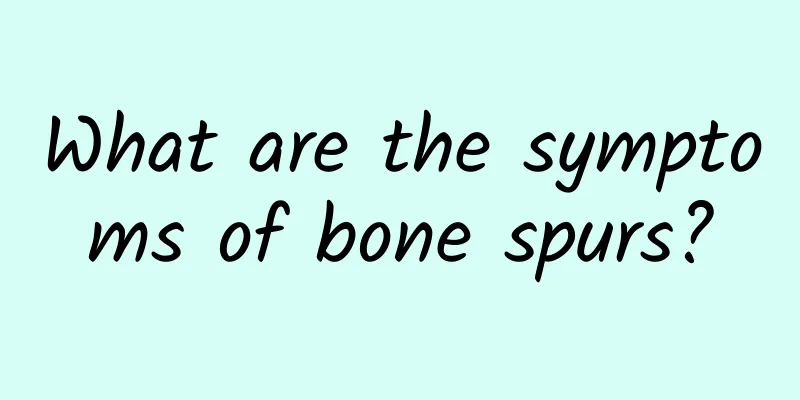What are the symptoms of bone spurs?

|
Common symptoms of bone spurs include local pain, joint stiffness, limited mobility, and possible swelling. Bone spurs are usually caused by joint degeneration, long-term strain or inflammation, and treatments include medication, physical therapy, and lifestyle adjustments. 1. Local pain is the most typical symptom of bone spurs. Pain usually occurs at the joints or bone edges, especially when moving. The formation of bone spurs is related to the wear of joint cartilage. After the cartilage degenerates, the bone edges will proliferate to form bone spurs, which will stimulate the surrounding tissues and cause pain. For example, knee bone spurs may cause pain when walking, and spinal bone spurs may cause discomfort in the back or neck. 2. Joint stiffness is also a common symptom of bone spurs. Bone spurs can affect the normal movement of joints, causing joint stiffness in the morning or after a long period of inactivity. This condition is more common in the fingers, knees, and spine. Joint stiffness is usually accompanied by pain and affects daily activities such as bending over, squatting, or holding objects. 3. Limited movement is another significant symptom of bone spurs. Bone spurs can limit the range of motion of the joints, making it difficult for patients to complete certain movements. For example, bone spurs in the shoulder joint may make it impossible to raise the arm, and bone spurs in the hip joint may affect walking or standing. The degree of limited movement is related to the size and location of the bone spur. 4. Swelling may occur with bone spurs. Bone spurs stimulate surrounding tissues, which may trigger an inflammatory response and lead to local swelling. Swelling is usually accompanied by pain and tenderness, especially when touched or pressed. For example, heel spurs may cause swelling on the sole of the foot, affecting walking. Treatments for bone spurs include medication, physical therapy, and lifestyle adjustments. Medication often uses nonsteroidal anti-inflammatory drugs such as ibuprofen and diclofenac to relieve pain and inflammation. Physical therapy such as hot compresses, cold compresses, and ultrasound therapy can help relieve symptoms. Lifestyle adjustments include avoiding excessive strain, maintaining a proper weight, and doing moderate exercise such as swimming and yoga. Symptoms and treatments of bone spurs vary from person to person. It is recommended to seek medical attention promptly when symptoms occur and receive personalized treatment based on the doctor's advice. Through reasonable treatment and lifestyle adjustments, the discomfort caused by bone spurs can be effectively relieved and the quality of life can be improved. |
<<: Is acute osteomyelitis serious?
>>: How to recover from intestinal obstruction
Recommend
How much does breast cyst surgery cost?
The cost of breast cyst surgery is usually betwee...
Causes of swollen calves
Swollen calves can be one of the common problems ...
How to get rid of accessory breast
To put it simply, accessory breast is an extra pi...
The best way to treat cholelithiasis
The best way to treat cholelithiasis varies depen...
Can knee arthritis heal on its own?
Knee arthritis is a common joint disease, which i...
Do I need to take medicine for breast cysts?
Breast cysts usually do not require medical treat...
Can I still get pregnant with a breast cyst?
Breast cysts do not usually affect a woman's ...
Can age spots be cured?
Age spots can be treated, but the right treatment...
What are the hazards and consequences of gallstones?
Gallstones can cause a variety of serious hazards...
How to treat bad breath and excessive liver fire
Bad breath is often closely related to excessive ...
Can reactive arthritis be cured?
Reactive arthritis can usually be cured after rea...
Is the transverse colon the large intestine or the small intestine?
The transverse colon is part of the large intesti...
Is surgery or conservative treatment better for gallstones?
Treatment for gallstones depends on the severity ...
What should patients with gallstones pay attention to in their diet?
Patients with gallstones need to pay special atte...
Why do you have breast cysts?
Breast cysts are a common breast disease that can...









